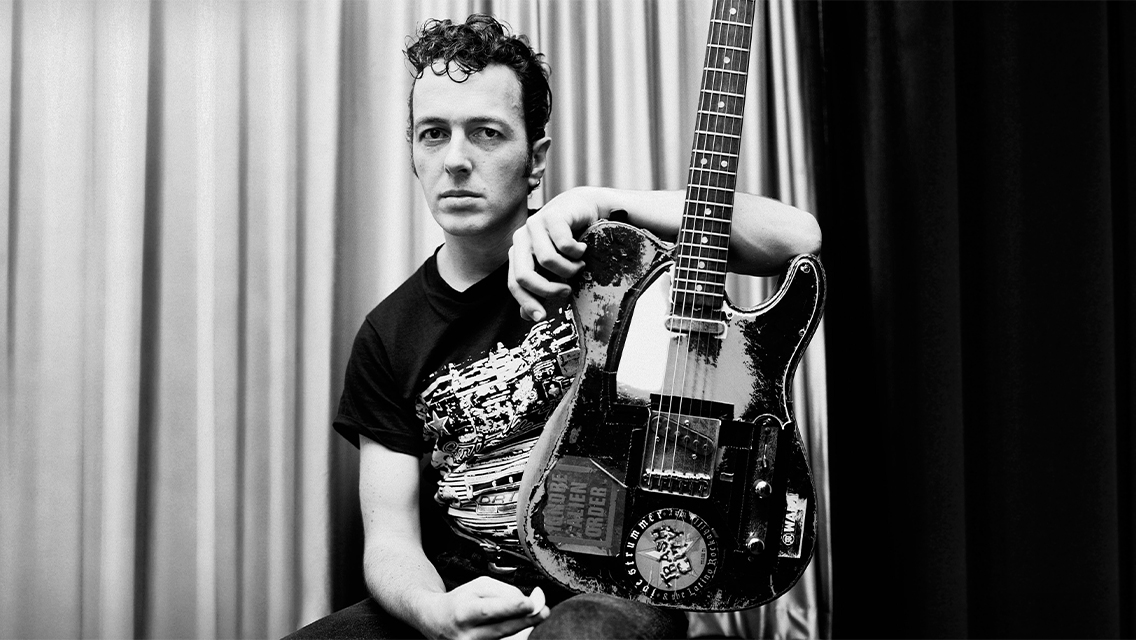
Sections
You probably have a vague memory of your elementary school music class. Maybe you remember being taught that major chords = happy and minor chords = sad. On an emotional level, that’s true. That’s because major chords tend to sound brighter and minor chords sound darker.
And if we were nine years old, that explanation would be good enough. But now, we’re going to dive a little deeper and get a more detailed, slightly more technical explanation to help learn to identify and play major and minor scale chords.
What Makes a Chord Minor or Major?
The difference between a major and minor chord comes down to one, simple change: the 3rd in a scale.
A major chord contains the 1st, 3rd, and 5th notes of the major scale.
A minor chord contains the 1st, flattened (lowered) 3rd, and 5th notes of the major scale that it’s named for.
When trying to determine what is the difference between major and minor scales and chords, you can apply this formula to figure out the notes in any major or minor scale. With these formulas in mind, a major scale will always contain a third (or major third) note, whereas a minor scale will never have a major third note in its construction. In a minor scale, the 3rd note that comprises the scale or chord will always be flattened (or lowered) by a half-step. This is what gives a minor chord its somber sound.
Music is all about patterns. Once you know those “rules” and patterns, you can figure out pretty much anything on your own. And with practice, it’ll become second nature to transition between major and minor chords and learn the correct positioning for many of these chords.
Constructing Major and Minor Chords & Scales
Let’s try visualizing how a minor scale is constructed vs. a major scale. This way, we can take a better look at the difference between a major scale - and its respective chord - and a minor scale.
A scale is made up of 7 notes (8 notes, if you count the final note that bookends the scale):
1st note (or root note), which gives the scale its name
2nd note, which is one whole note higher than the root note
3rd note, which is one half note higher than the 2nd note
4th note, which is one whole note higher than the 3rd
5th note, which is one whole note higher than the 4th note
6th note, which is one whole note higher than the 5th
7th note, which is one whole note higher than the 6th note
8th note, is the same as the root note – only one octave higher. This 8th note is a half note higher than the 7th note.
For example, an A Major Scale would include the following notes: A—B—C#—D—E—F#—G#-A. If you grab your guitar or bass and play these major scale chords, it’ll sound cheerful and welcoming.
Now, to turn this major scale into a minor scale. Focus on that 3rd, flattened note in the scale. In this case, take the C#, and drop it 1 full note down (half step down on the guitar neck). This would become the A Natural Minor Scale and would be made up of these notes: A—B—C—D—E—F—G–A.
Play these minor scale chords and it sounds darker and heavier.
Wait, Why Did Three Notes Change?
Good catch! As you continue to learn, you’ll see how all these small changes create different scales. But when it comes to determining major or minor chords, you’ll want to stay focused on the 3rd.
That’s it. One little switch on that second note has the power to make you feel hope or dread.
Relative Minor vs Major Scales
A relative minor scale sounds complicated, but really, it isn’t! Rather, a relative minor scale is a scale that shares all of the same notes as those of a major scale, but are played in a different order. For example, the A minor scale is the relative minor of the C major scale, as both scales share the same notes. Take a look:
A Minor Scale: A–B–C–D–E–F–G–A
C Major Scale: C–D–E–F–G–A–B–C
As you can see, both scales share the same exact notes, but have a different starting point. With A Minor being the relative minor of C Major, although they have the same notes, they sound totally different when you hear them played.
For instance, the C Major scale – usually the very first scale that beginner guitarists learn – has a bright, cheerful tone to it. On the flipside, the A Minor scale has a darker, more foreboding tone, even though it’s made up of the same exact notes. Relative minor scales are a great way to remember that the order in which you play notes, and which notes you position next to each other in a song, has significant bearing on its mood and tone. When playing using these scales, you’ll use the appropriate major chords and minor chords that work within those scales. Knowing these components of musical theory can also help you more easily craft guitar solos, if you start writing your own music.
Don’t miss out!
Be the first to know about new products, featured content, exclusive offers and giveaways.
How Do I Find Out What Is a Scale’s Relative Minor?
Yeah, yeah. That’s great and all – but how do I find out what scale is the relative minor of a major scale? Is there an easy formula to find out what is a scale’s relative minor? There is! The relative minor is the 6th interval of a major scale, while it’s counterpart is the 3rd interval of a minor scale.
A Minor Scale: A–B–C–D–E–F–G–A
As you can see here, C is the third note in the A Minor scale. This signals that the relative major counterpart to this A Minor scale would be the C Major.
C Major Scale: C–D–E–F–G–A–B–C
Taking a look at the C Major scale above, you’ll see that the sixth note is A. This is your cue that the relative minor of C Major is A Minor.
Major and Minor Song Examples
Now that we have the theory behind major and minor scales and the chords that correspond with those scales, let’s see how they feel and sound under our fingers. Here are a few songs that use both major and minor chords in their composition. Some of the ways these chords are used together will surprise you. Listen to these songs and see how major and minor chords, when used in the same song, can create interesting soundscapes and different moods.
“Shout” - The Isley Brothers
This 1959 tune combines R&B, gospel, pop, and blues to create a unique, raucous classic. Despite the deluge of positive energy that radiates from this song, you’re going to find a minor chord. In fact, half of this song contains a minor chord. ”Shout” by The Isley Brothers contains only two chords: Am and C. Once you have memorized the chords proper placement, start playing around with making that A major and the C minor and see how that inversion changes the sound and tone of the song.
Learn how to play "Shout" here.
“Celebration” - Kool and the Gang
Just because a song uses minor chords doesn’t mean it has to be dark and brooding. This good-time staple uses: Cm7, Dbmaj7, Bbm7, Ab/C, F7, E9sus4, Gb/Bb, and Db/A chords. “Celebration” by Kool and the Gang combines fusion, and funk, with the band’s established disco foundation for a massive hit that will be heard at weddings and sporting events until the end of time.
Learn how to play "Celebration" here.
“Another Somebody Done Somebody Wrong Song” - B.J. Thomas
This classic country rock song is all about heartbreak, so you’d think it would be filled with minor chords. Spoiler alert: there’s only one. In “Another Somebody Done Somebody Wrong Song,” you can almost hear B.J. trying to lift himself out of his heartbreak by using all these major chords: D, G, A7, Dmaj7, D7, Em, F#7, B7, and E7. Maybe this duel between the sadness of our protagonist and the positivity of the chords is what helped make this song take home the 1976 Grammy Award for Best Country Song, awarded to its songwriters, Larry Butler and Chips Moman.
Learn to play "Another Somebody Done Somebody Wrong Song" here.
“Where Is My Mind” - Pixies
Here’s a heady (no pun intended … okay, maybe slightly intended), groovy rocker that switches between major and minor chords (C, Am, E, F, Fm, and G), to set up a specific mood. Despite a pretty consistent drum beat and chord progression, you’re never totally at ease, thanks to Frank Black’s vocal attack and the song’s eerie backing vocals. “Where Is My Mind” also gives you an opportunity to hear how switching between major and minor chords affects the song—with the F and Fm right next to each other. When playing, think about how the vibe of the song changes if they just hung on either the major or minor version of that F chord. Give it a try for yourself!
“California Girls” - The Beach Boys
It’s the Beach Boys! How can you not think of sun, surf, and smiles? And yet, when you dive into this all-time classic, you’ll see it’s almost 50% minor chords: A, G, D, E, Bm, F, Am, and Gm. You can also hear a key element to the Beach Boys success on “California Girls”: Brian Wilson’s otherworldly musical vision and Mike Love’s focus on commercial viability. What you get is a deceptively complex song with enough memorable hooks to still be relevant decades later.
These are just a few examples of how choosing major and minor chords can create a mood, both expected and unexpected. And remember, if you’re curious about why a song is making you feel happy or sad, the key could be that third note.
Learn more with Major and Minor Chord Guitar Lessons on Fender Play
When you’re first learning to play guitar, it can feel a little overwhelming. There are so many chords and scales to learn and commit to memory. Fender Play makes it easy to learn chords, scales, musical theory – and the songs you love to help you put those lessons into practical practice.
Bite-sized lessons taught by professional instructors break concepts down for you and give you the chance to play along and learn. Practice whenever and wherever you want, making learning even more convenient.
Sign up for a free trial of Fender Play today and get started on your musical journey!


